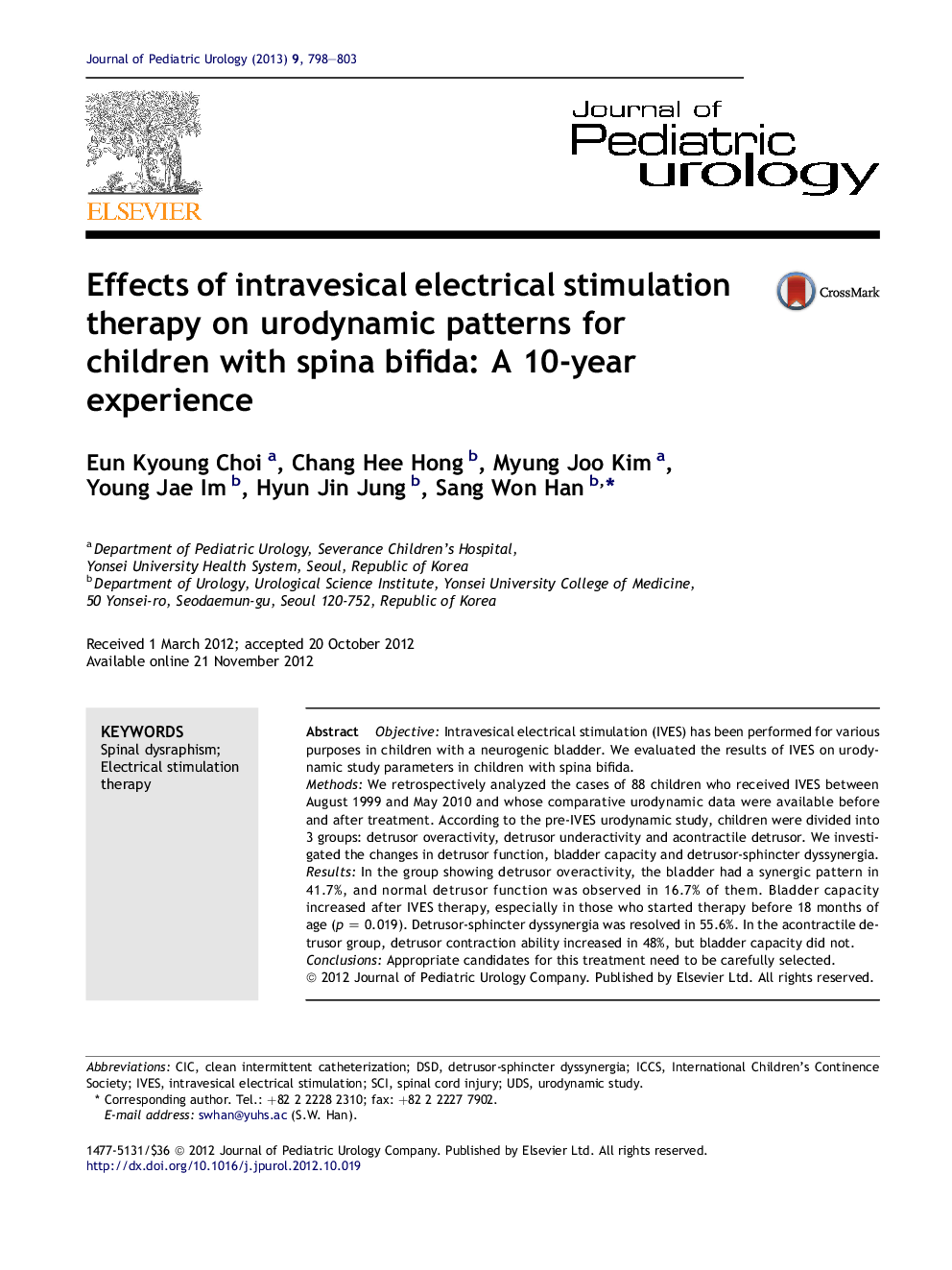| Article ID | Journal | Published Year | Pages | File Type |
|---|---|---|---|---|
| 6218520 | Journal of Pediatric Urology | 2013 | 6 Pages |
ObjectiveIntravesical electrical stimulation (IVES) has been performed for various purposes in children with a neurogenic bladder. We evaluated the results of IVES on urodynamic study parameters in children with spina bifida.MethodsWe retrospectively analyzed the cases of 88 children who received IVES between August 1999 and May 2010 and whose comparative urodynamic data were available before and after treatment. According to the pre-IVES urodynamic study, children were divided into 3 groups: detrusor overactivity, detrusor underactivity and acontractile detrusor. We investigated the changes in detrusor function, bladder capacity and detrusor-sphincter dyssynergia.ResultsIn the group showing detrusor overactivity, the bladder had a synergic pattern in 41.7%, and normal detrusor function was observed in 16.7% of them. Bladder capacity increased after IVES therapy, especially in those who started therapy before 18 months of age (p = 0.019). Detrusor-sphincter dyssynergia was resolved in 55.6%. In the acontractile detrusor group, detrusor contraction ability increased in 48%, but bladder capacity did not.ConclusionsAppropriate candidates for this treatment need to be carefully selected.
